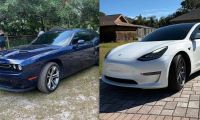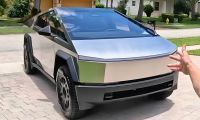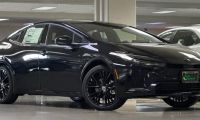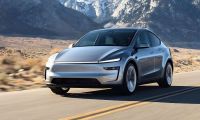For the first time since the Ford Model T altered the world’s traffic patterns, a new car, the Tesla Model Y, has captured the global sales crown. In a market saturated with crossovers masquerading as innovation, the all-electric Model Y stands atop the heap, torch in hand, powered by kilowatt-hours and Elon Musk’s restless, iconoclastic vision.

Yet for every acolyte ready to evangelize their Tesla experience, there’s another driver left cold by the brand’s devotion to minimalism and its occasional missteps in the real world, especially if you happen to live somewhere with more traffic cameras than tumbleweeds.
How Tesla Engineers Their Vehicles
“Received my Juniper Model Y last week and it is completely as expected! Comfortable drive and amazing sound system. No regrets choosing this car instead of a premium German car.”
Reported new owner Henk_Renk on Reddit. In an era when German badges and British coachwork have long defined luxury, Tesla rewrote the rules with instant torque, over-the-air updates, and a suite of features.
Tesla’s Best Selling Vehicle
- In 2023, the Tesla Model Y sold approximately 1.23 million units worldwide, surpassing traditional top-sellers like the Toyota RAV4 and Corolla. This marks the first time an electric vehicle has led global car sales.
- The Model Y experienced a 64% increase in sales compared to 2022, demonstrating its rapid adoption and popularity among consumers.
- Building on its 2023 success, the Model Y maintained its position as the best-selling vehicle globally in 2024, indicating sustained consumer demand and Tesla's strong market presence.
But for all the Silicon Valley bravado, Tesla’s brand of minimalism is polarizing. The Model Y’s interior offers all the warmth of an Apple Store at closing time: one giant screen, a sea of synthetic materials, and little evidence of human hands ever touching the place. This approach delights technophiles but leaves traditionalists yearning for tactile controls and the artistry of real wood or leather. For every customer marveling at the Model Y’s serene dashboard, there’s another in a BMW showroom, craving the emotional heft of well-crafted trim and switches that click, not swipe.

No car is perfect, but at $60,000, the small flaws start to matter. Henk_Renk’s honeymoon with his Model Y came with its share of “minor setbacks”:
“The passenger door needs a firm pull to close. Had three people already closing the door not hard enough. Phone calls are not very clear. From the other side, they can hear a lot of sounds, just like you are calling directly from the phone. Sounds like a ‘French’ car.”
And while Tesla’s software magic can update your car overnight, it can’t sand down every rough edge…even if it can park itself.
Tesla’s Great Reputation
Yet, where Tesla truly built its reputation, software, electrification, and raw acceleration, the company still delivers. The problem is that not all software translates globally, especially when regulation rears its head.
“The enhanced autopilot is really not that impressive on Dutch roads. Misjudging a lot of lines and speed signs (keep telling me it is a 30 zone while it is 50)… Autopark is parking like a 16-year-old. For really easy parking situations, it needs at least 3 movements for it to be almost straight (never puts it perfectly aligned in the parking spot),”
Henk_Renk explained. This is the inevitable collision of California code with European bureaucracy, software is only as clever as the laws allow it to be.
This leads us to the blunt truth of owning a Tesla in Europe, features you paid dearly for may not work as advertised. The Reddit hivemind summed it up,
Advertising “Autopark and EAP are useless in Europe due to regulations, sorry no one told you.”
Some users point out the technical angle: “It’s because it’s entirely vision-based based while others partially or entirely use lidar.” Others counter,
“No, they don’t. Most other cars use a camera and USS.”
Regardless, Tesla’s all-in bet on vision-based autonomy often leaves European drivers with features that feel less like tomorrow’s technology and more like a science project that escaped the lab.
Tesla FSD In Other Countries
- In countries like China and across Europe, Tesla's FSD capabilities are curtailed by stringent local regulations. For instance, for a long time in China, Tesla's FSD has not extended beyond Enhanced Autopilot functionalities, with features like Summon and Autosteer on City Streets pending approval. Similarly, in Europe, certain FSD features require driver confirmation or are still under testing phases.
- While Tesla has an extensive Supercharger network in North America, its presence is less robust in other regions. In Europe, Tesla had to adapt to the CCS2 charging standard, and in China, vehicles and Superchargers use the GB/T standard. These variations can lead to compatibility issues and reduced charging convenience for Tesla owners traveling internationally.
- Tesla's operations are affected by international trade tensions and supply chain dependencies. For example, China's export controls on rare earth elements have impacted Tesla's production of components like magnets essential for their vehicles and robotics. Additionally, data transfer restrictions in countries like China complicate Tesla's ability to implement and update its autonomous driving features effectively.
Despite these real frustrations, AutoPark “parking like a 16-year-old,” Summon that rarely moves, and call quality that leaves friends thinking you’ve bought a Renault from 2007, there’s an enduring sense of optimism among owners.
“Autopark works well for me in Europe. Summon and EAP are seriously bad though….”
Reports another user. And most surprising of all, the thread’s original poster still concludes,
“In the end I’m really happy with the car.”
This paradox is the Tesla experience in a nutshell: the thrill of being ahead of the curve, matched by the irritation of being a de facto beta tester.
The Dominance Of The Tesla Model Y
And yet, the Model Y’s dominance is no accident. Tesla gets the big things right, battery range, charging network, and the sort of continuous improvement that legacy automakers only dream about.

The world is changing beneath our feet. The question isn’t whether Tesla will rule the road, but how much of the world will follow them into their screen-filled, minimalist future. For now, if you’re on a European street, you may need to park yourself; your Model Y certainly isn’t going to do it perfectly for you.
Do you own a Tesla in Europe? How has FSD been performing for you, and have you encountered any issues?
Share your experience in the comments below.
Image Sources: Tesla Media Center
Noah Washington is an automotive journalist based in Atlanta, Georgia. He enjoys covering the latest news in the automotive industry and conducting reviews on the latest cars. He has been in the automotive industry since 15 years old and has been featured in prominent automotive news sites. You can reach him on X and LinkedIn for tips and to follow his automotive coverage.













Comments
A fool and his money are…
Permalink
A fool and his money are soon parted.
🎯
Permalink
In reply to A fool and his money are… by Buzz Wired (not verified)
🎯
Hit the nail on the head. I…
Permalink
In reply to A fool and his money are… by Buzz Wired (not verified)
Hit the nail on the head. I've tried to use autopark about 5 years ago and it sucked so much it crashed the car into a post.
The speed limits are also all over the place, usually limiting autopilot to 50+10 km/h in what should be a 90 km/h area.
I totally get it! Autopark…
Permalink
In reply to Hit the nail on the head. I… by João Campos (not verified)
I totally get it! Autopark can be frustrating, especially when it doesn’t perform as expected. It’s definitely still a work in progress for many users.
Try the Genesis HDA2…
Permalink
Try the Genesis HDA2 assistant and you'll never want Tesla "self driving" again (unless they change it 180°).
Why? I have HDA engaged all the time, not just on highways. It takes the attention stress out of driving.
It doesn't do fancy stuff like braking/re-accelerating at traffic lights - that I can do myself - and I rarely use the self-parking feature, but:
HDA never switches off, not at 100mph on a German autobahn and not during stop'n'go in our village; it doesn't sound any bingbing, comes back silently after I overule it (except after braking) and it is always "there to help" and take over again - unobtrusive like a good butler. What a smooth experience and welcome change!